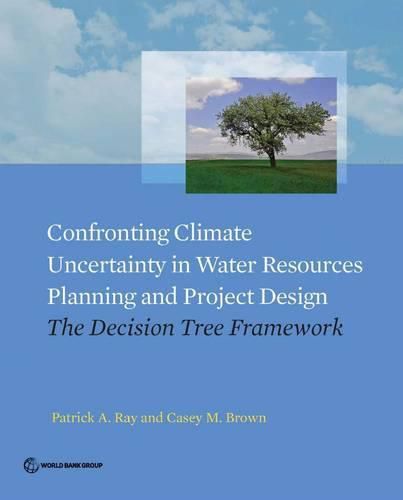Readings Newsletter
Become a Readings Member to make your shopping experience even easier.
Sign in or sign up for free!
You’re not far away from qualifying for FREE standard shipping within Australia
You’ve qualified for FREE standard shipping within Australia
The cart is loading…






The Decision Tree Framework described in this book provides resource-limited project planners and program managers with a cost-effective and effort-efficient, scientifically defensible, repeatable, and clear method for demonstrating the robustness of a project to climate change. At the conclusion of this process, the project planner will be empowered to confidently communicate the method by which the vulnerabilities of the project have been assessed, and how the adjustments that were made (if any were necessary) improved the project’s feasibility and profitability. The framework adopts a bottom-up approach to risk assessment that aims at a thorough understanding of a project’s vulnerabilities to climate change in the context of other nonclimate uncertainties (for example, economic, environmental, demographic, or political). It helps to identify projects that perform well across a wide range of potential future climate conditions, as opposed to seeking solutions that are optimal in expected conditions but fragile to conditions deviating from the expected.
$9.00 standard shipping within Australia
FREE standard shipping within Australia for orders over $100.00
Express & International shipping calculated at checkout
The Decision Tree Framework described in this book provides resource-limited project planners and program managers with a cost-effective and effort-efficient, scientifically defensible, repeatable, and clear method for demonstrating the robustness of a project to climate change. At the conclusion of this process, the project planner will be empowered to confidently communicate the method by which the vulnerabilities of the project have been assessed, and how the adjustments that were made (if any were necessary) improved the project’s feasibility and profitability. The framework adopts a bottom-up approach to risk assessment that aims at a thorough understanding of a project’s vulnerabilities to climate change in the context of other nonclimate uncertainties (for example, economic, environmental, demographic, or political). It helps to identify projects that perform well across a wide range of potential future climate conditions, as opposed to seeking solutions that are optimal in expected conditions but fragile to conditions deviating from the expected.